-
Car Reviews
- All reviews
- Midsize SUVs
- Small cars
- Utes
- Small SUVs
- Large SUVs
- Large cars
- Sports SUVs
- Sports cars
- Vans
Latest reviews
- Car News
-
Car Comparisons
Latest comparisons
- Chasing Deals
The Toyota Yaris has long been appreciated by Australians for its frugal fuel consumption and fine reliability – finally joined by fun-to-drive dynamics in the latest generation – but does this formula translate to the Yaris Cross SUV?
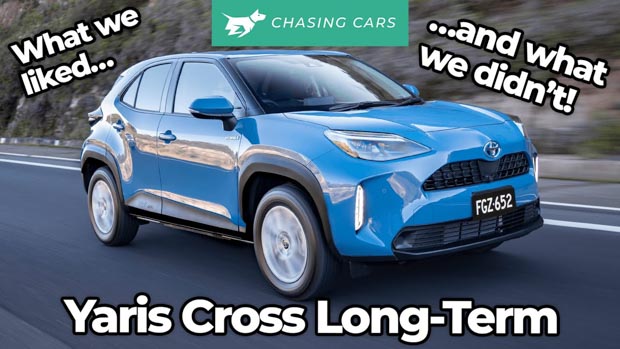
While the new-generation Toyota Yaris hatch has made headlines for its premium pricing – and its muscular, rally-inspired all-wheel-drive GR range-topper – it’s the Yaris Cross small SUV that matters most to the majority of people.
Slotting into the strong-selling small SUV category (that managed to easily outpace the once-dominant small car class in 2021), the Yaris Cross finished the year with almost 75 percent more volume than the closely related Yaris hatch, now making it the small Toyota to watch.
With its popularity on the uptick, we’ve decided to investigate for ourselves whether the Yaris Cross is indeed a better Yaris – both in terms of what it does as well as what it offers for the money – and we’ll have four months to make up our minds.
Is a Toyota Yaris Cross Hybrid worth considering over a regular light/small hatch (or the multitude of other small SUVs on offer), or is it just about looking like an SUV? You’re about to find out.
When the Toyota Yaris Cross small SUV first arrived at Chasing Cars for an official review, it didn’t take us long to realise we had something intriguing on our hands.
While a starting price of $26,990 (before on-road costs) wasn’t that impressive for a mainstream small SUV, adding a hybrid option for just $2000 was. And after climbing behind the wheel for our first road test we were more than impressed with what the Yaris Cross had to offer – hence why we decided to find out what it was like to live with over a longer period of time.
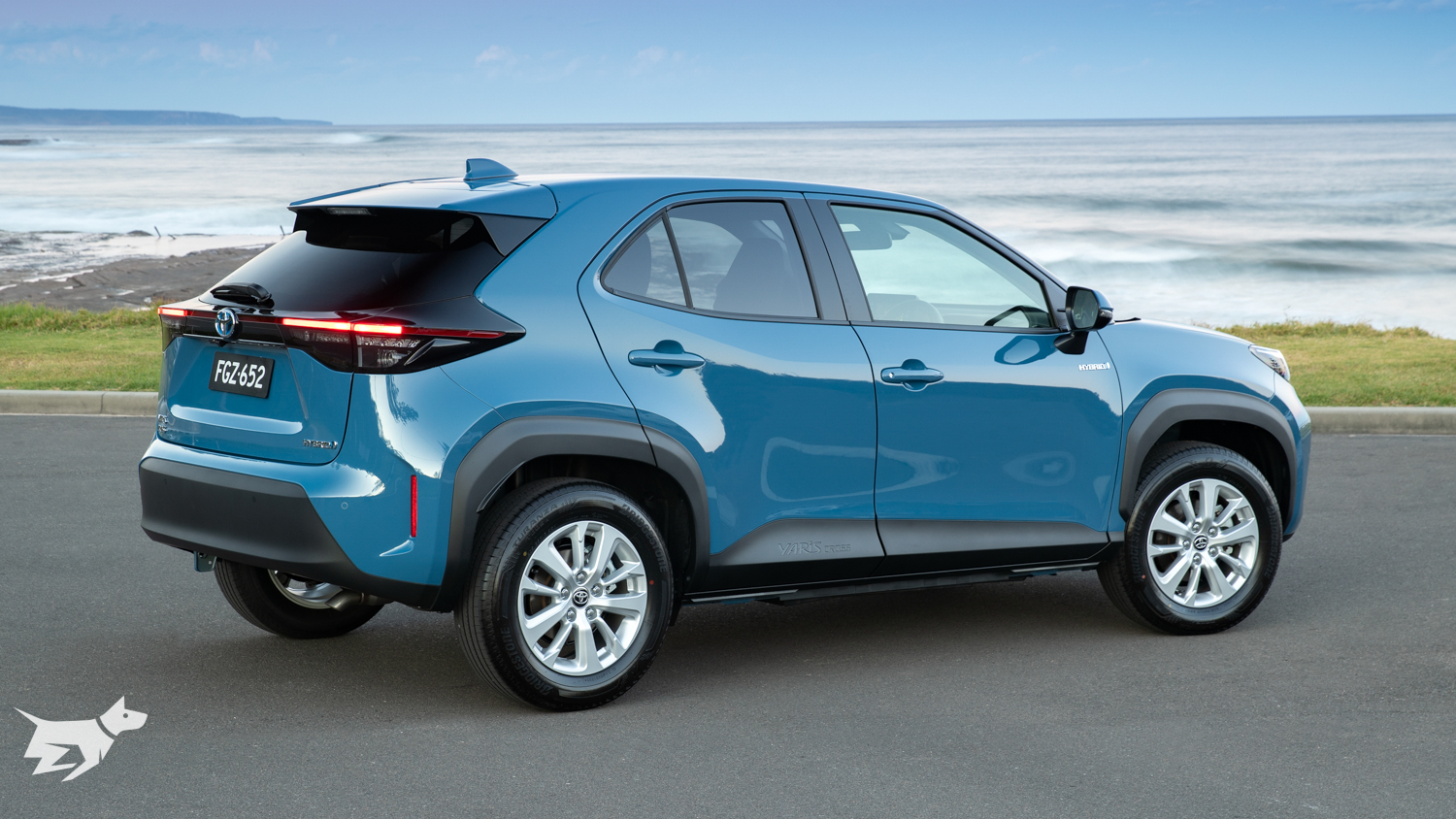
In our original Yaris Cross review we recommended that buyers opt for the front-wheel-drive GXL Hybrid, which sits smack-bang in the centre of the range with a price of $31,990 (before on-road costs), and that’s exactly what we have here for the next four months. May as well investigate the Yaris Cross sweet spot right?
The mid-spec GXL version packs a number of intelligent upgrades over the base Yaris Cross GX including LED headlights and factory navigation, along with safety features such as blind-spot monitoring and a 360-degree camera – stuff that isn’t available on many small SUVs and would prove useful for newer drivers.
Now several weeks into our four-month test of the Yaris Cross GXL Hybrid it’s clear this little SUV without a doubt offers an excellent but compromised ownership experience.
First the good. The Yaris Cross sits on Toyota’s GA-B platform that underpins the likes of the fantastic C-HR small SUV that sits above it in Toyota’s range – a car known for its polished ride and fluid dynamics
Commuting to work via pokey backstreets and short highway blasts, I’ve found the combination of this admirable platform and modestly sized 16-inch alloy wheels fitted to our car delivers a smooth ride that shrugs off most of Australia’s rough surfaces.
Around town the Yaris Cross is a cinch to manoeuvre. Its small size combined with front and rear parking sensors, and a 360-degree ‘surround view’ camera, makes even the most tricky of parallel parks an absolute breeze.
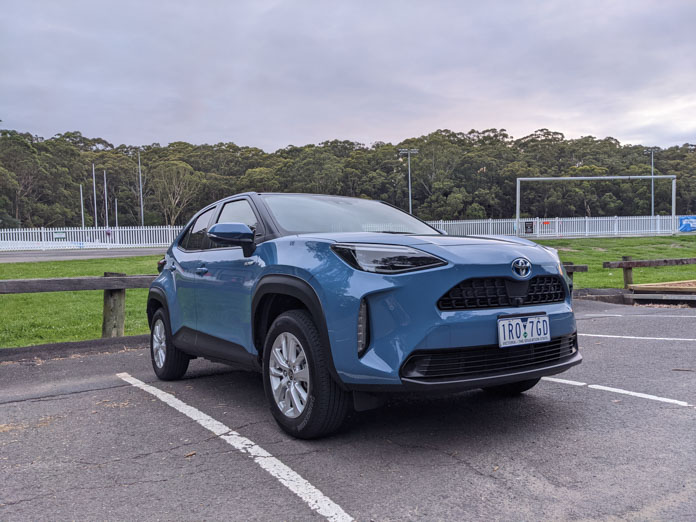
It also helps that all four corners are easily visible thanks to the Yaris Cross’s boxy shape. Assisting this is a commanding driving position that provides a fine view while leaving plenty of headroom for my six-foot frame.
Unfortunately, the Yaris Cross Hybrid’s drivetrain pairs two whisper-quiet electric motors with a rowdy 1.5-litre naturally-aspirated three-cylinder that develops 67kW of power at 5500rpm and 120Nm of torque from 3800-4800rpm, for a total system power output of 85kW. While the petrol three-pot is a likeable thing – thrumming away in typical three-cylinder fashion – it isn’t on the same page as the electric bits when it comes to refinement.
Toyota doesn’t state a combined torque figure, but the instant torque response from the front-mounted electric motors is quite thrilling and gives the Yaris Cross turbo-like punch for easily darting in and out of traffic … though when you ask for maximum acceleration the petrol engine loudly chimes in.
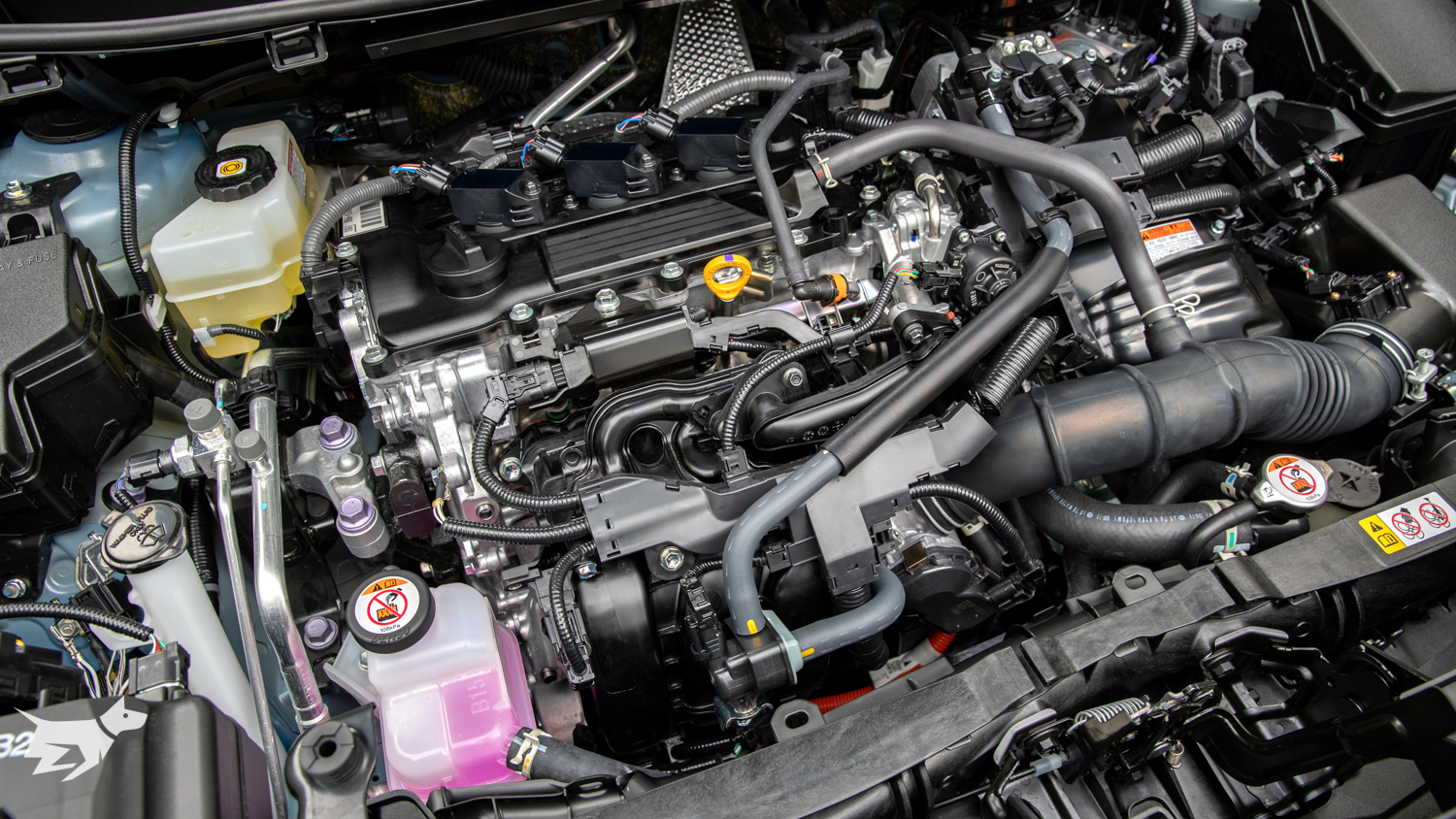
One point of frustration for me is the 7.0-inch touchscreen, which is standard on all Yaris Cross grades with wired Android Auto and Apple CarPlay.
While the image quality is okay and the screen is responsive, I’ve had some annoying drop-out issues when connecting my phone through Android Auto, so I’m planning on purchasing a new USB cable to try and narrow down the problem.
Even so, this won’t solve the issue of having just one awkwardly placed USB port on the GX and GXL grades, which seems like an odd choice for a brand-new SUV focused on young buyers.
The top-spec Yaris Cross Urban adds a second USB port but this should really be standard across the range – not an elitist choice reserved for those willing (or able) to pay more.
With a lower price point and a more compact size, small SUVs can be easier to live with and offer clear benefits over larger models like the RAV4, but is the Yaris Cross big enough to live with?
People will tell you that size matters. Other people will tell you that size doesn’t matter, so clearly not everyone is going to be satisfied by this perennial argument. But what the Yaris Cross brings to the table is that small is often best – especially when living in a big city.
Now into my second month of ‘ownership’, if there is one thing I’ve grown to love about the Yaris Cross it’s just how easy the bloody thing is to park thanks to its compact size and boxy shape.

At just 4180mm long, the Yaris Cross is a significant 420mm shorter than Toyota’s RAV4 midsize SUV, and while this does bring packaging limitations, the effect of this size reduction isn’t felt from the front seat, where most people will be spending most of their time.
With an upright seating position and a steering wheel that telescopes (it adjusts in and out,as well as up and down) I found the Yaris Cross has been able to accommodate my largely leg-based six foot frame without maxing out the seat rails.
But while the front occupant area isn’t dimensionally small, it feels less comfortable (and less mature) due to both the lack of a centre armrest and absurdly designed door armrests that prioritise form over function and can’t support the full length of your arm.
This is a shame because the cloth front seats provide an otherwise comfortable driving experience, particularly for short stints.
Where the Yaris Cross truly makes its mark is in the rear seating area, which is noticeably more roomy than in a Yaris hatchback, though it’s still a space that is best left for younger children as legroom is fairly limited. That said, it has worked well enough to comfortably accommodate some of my vertically challenged friends during the odd lift home.
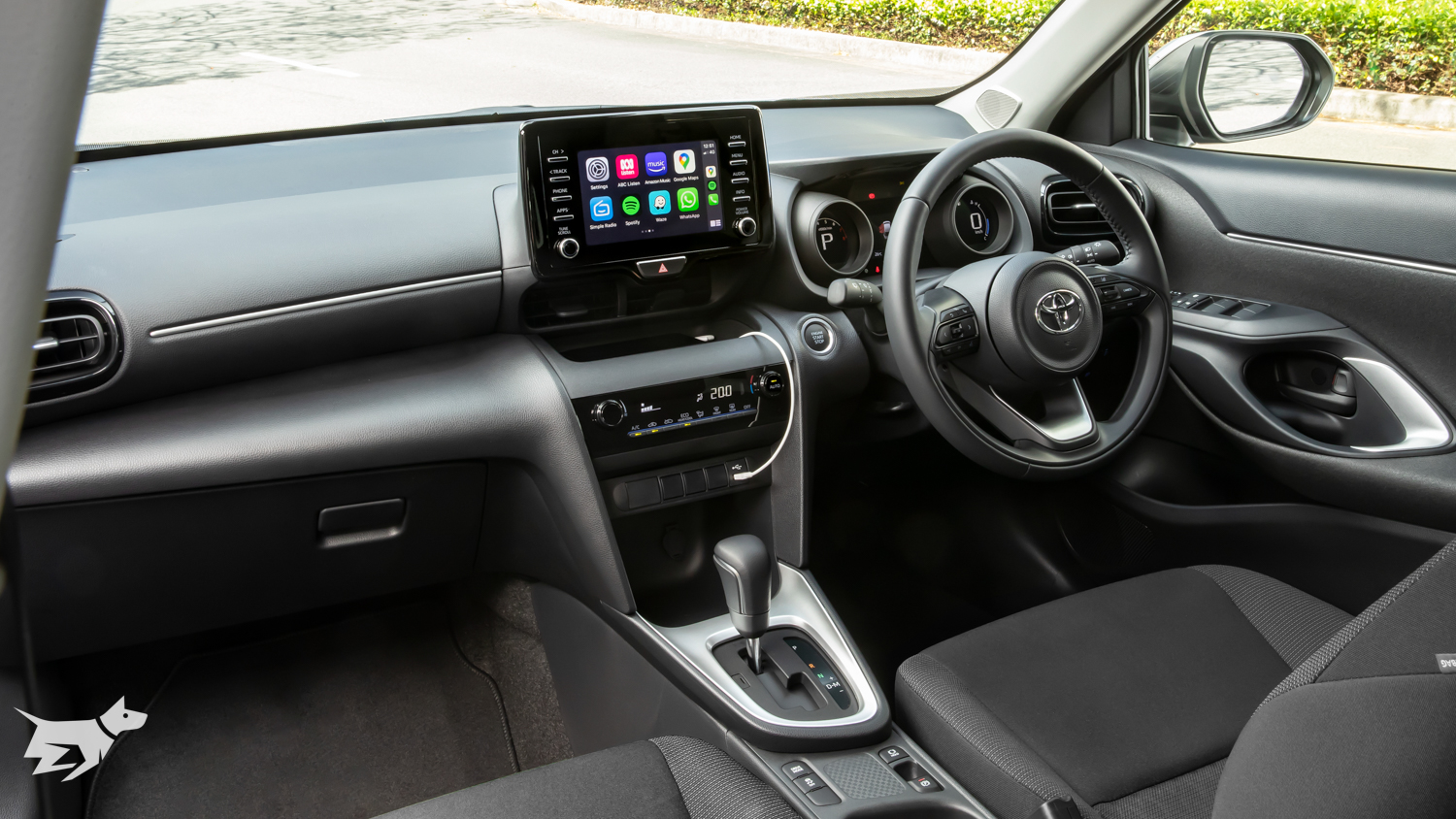
This space issue likely won’t matter as much for the young singles or couples likely to buy a Yaris Cross and there are easily exposed ISOFIX anchorage points for child seats if you should decide to expand your family.
The front-drive Yaris Cross Hybrid offers a 390-litre boot, which is a decent size for a small SUV – certainly more so than the cut-down, 314-litre boot in the AWD Hybrid model which also forgoes a space-saver spare wheel in order to house a third electric motor on its rear axle. In our opinion, that’s reason enough to champion the front-drive Yaris Cross over its $3000-dearer AWD alternative.
Both those boot volumes fall considerably short of the sizeable 542 litres offered by a RAV4, but the Yaris Cross’s boot area has a usefully boxy shape that allows me to stow taller items like pot plants as well as my 27kg American Staffy – a task that is less achievable in the slightly larger Toyota C-HR with its slicked back, coupe-style shape.
During my weekly shopping trips I’ve had no struggles with the space and can comfortably fit around six standard-sized shopping bags. The Yaris Cross GXL also comes with indented shopping hooks on its boot sides, though I’ve found these to be too low and small to actually be useful.
While not powered in the GXL, the rear hatch is very light and easy to open and close in my experience, though if you often find yourself stumbling to the car with arms full of baggage and children you may want to opt for the top-spec Yaris Cross Urban that features a power tailgate with kick sensor.

So with RAV4 Hybrid wait times stretching out to as much as 12 months, should young families look to the Yaris Cross Hybrid as a useful alternative?
While the Yaris Cross is noticeably smaller across the board, its back seat should be big enough for most kids of primary school age, and with the Yaris Cross having been awarded a five-star ANCAP safety rating, it presents a tempting proposition as an entry-level family car.
Next month I’m planning to stretch the legs of our Yaris Cross with some long highway trips to see how efficient and effective its hybrid drivetrain is at higher speeds. It’ll also be a good test of the front seats – I’d like to see how they fare after a few hours on a country road.
Now three months in, we’ve firmed our opinion on this Toyota Yaris Cross Hybrid long-termer and it’s become something of a mixed bag
As I mentioned back in month one, the Yaris Cross is an excellent performer around town offering a fine combination of sophisticated underpinnings, a compliant suspension tune and chunky tyres making for a comfortable and enjoyable ride.
Add to that surprisingly good steering and a punchy hybrid drivetrain to give it some decent shove out of corners and you’ll quickly discover that driving the Yaris Cross down to the local shops is a good deal more enjoyable than you might expect.
But what happens when the road opens up, travelling speeds increase and the demands on the Yaris Cross’s dynamics – not to mention its highway refinement and seating comfort – become a little more serious?
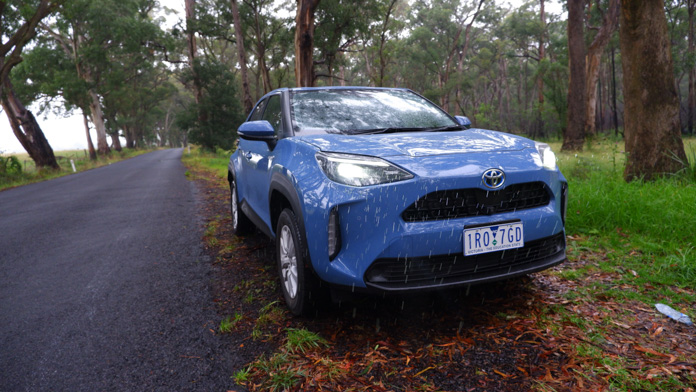
Excelling in the city is a no-brainer for a front-drive small SUV like the Yaris Cross, so I’ve been keen to get it onto the highway for a few hours’ drive down to Wollongong … in what turned out to be some truly dreadful weather.
Driving in heavy rain is a necessary evil in Australia, so tackling a hilly freeway in such conditions felt good in the Yaris Cross knowing the sheer amount of safety I was wrapped in. Features like the blind-spot monitoring (fitted to GXL and Urban grades) proved a godsend when one over-excited punter tore through the fog as I attempted to change lanes.
Adding to that peace-of-mind, our Yaris Cross also features front and rear AEB with pedestrian and cyclist detection, lane-keep assist and adaptive cruise control – all of which works well, though the AEB can be a bit over-eager in heavy traffic.
Considering its reasonably light 1.2-tonne kerb weight and unsporting 205/65R16 tyres, the Yaris Cross feels reasonably planted on the highway – its informative steering helping me accurately skate through some deeper-than-expected puddles. To its external credit, even in pounding rain the Yaris Cross never feels like it’s going to come unstuck.

While the hybrid powertrain feels punchy around town, with 85kW of combined power and a limited amount of torque at higher speeds, the Yaris Cross struggles on the highway.
It’s fine on long stretches of flat road where it cruises happily (and quietly) at an indicated 110-120km/h, but once you arrive at a hill the three-cylinder petrol engine combines with the CVT transmission to fill the cabin with an intrusive drone and not a whole lot of power to compensate.
Overtaking requires a good stretch of road and some careful planning though the Yaris Cross’s low side window line, and strong LED headlights and fog lights (in higher grades) provide a clear view of the road.
Despite needing to be belted along, the Yaris Cross Hybrid drank an astonishing 3.8L/100km of regular unleaded during my trip – bang on its official combined fuel-consumption figure -, which is a good deal less than its best-selling rival, the front-drive Mazda CX-3 2.0-litre auto at 6.3L/100km combined.
Among the hullabaloo of hills and weather, the Yaris Cross’s infotainment continued to be something of a mixed bag.
The standard wired Apple CarPlay and Android Auto are reasonably snappy and the 7.0-inch touchscreen seems large enough in my opinion, but it’s clear that corners have been cut by offering just a single USB port.
What’s more, the placement of the USB port naturally results in the USB cable wrapping itself around the gearstick and I’ve had some infrequent connection issues – even after spending $35 on a new cable and switching to and from my iPhone and Android phones.
Once plugged in, the six-speaker audio system provides a respectable flexibility of talents, with a good amount of clarity and power in the sound but nothing beyond what I would expect for a car at this price point.
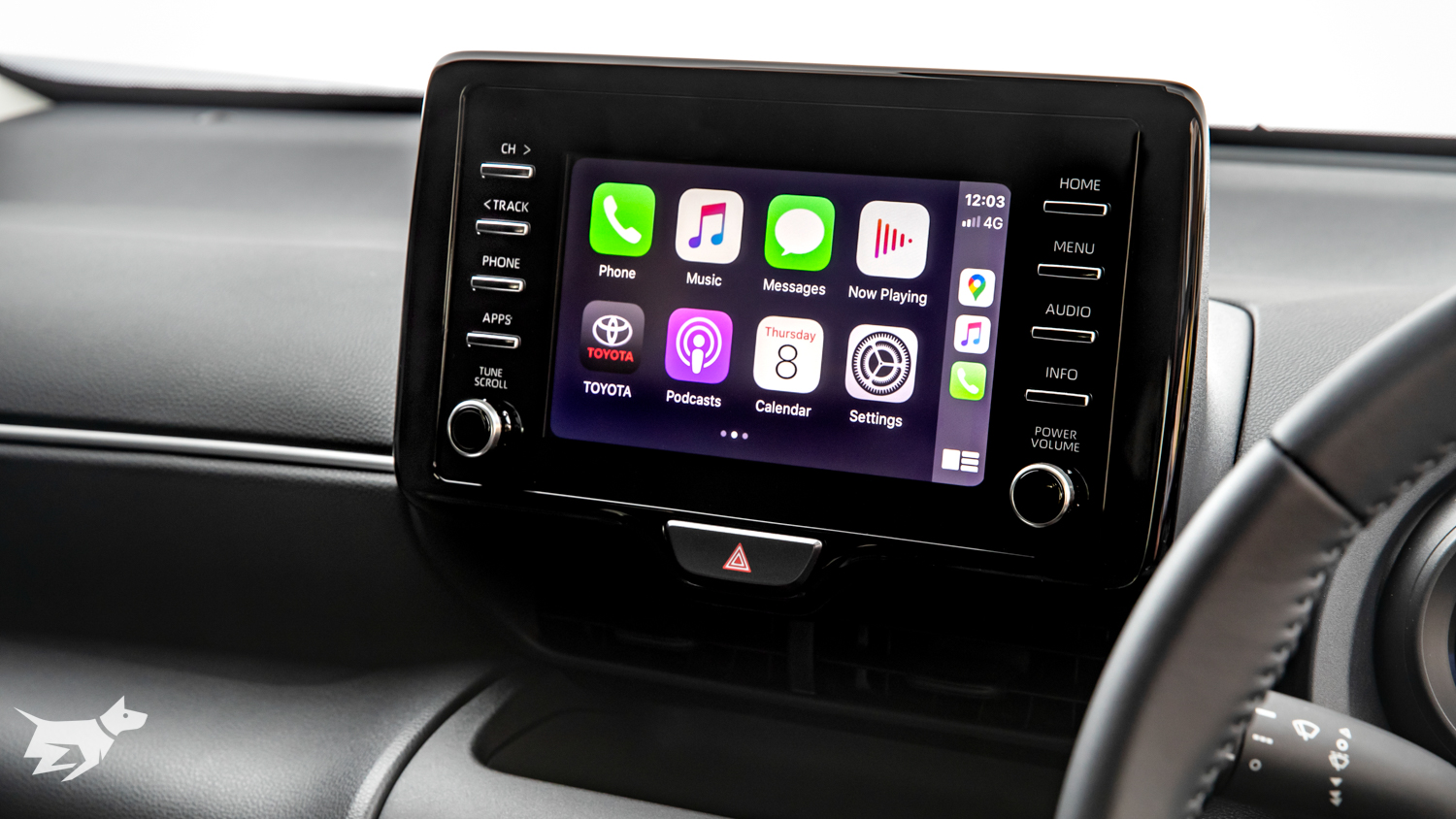
As I mentioned last month, the seating position is not ideal either. With the omission of a centre armrest and uncomfortable door armrests there is little to support your body (apart from the steering wheel!) and by the end of my three-hour round trip, my body felt quite fatigued.
The cloth seats themselves are okay for pottering around town and provide a pleasantly elevated driving position but they lack the proper support needed for long-haul trips – even for just three hours! In fact, the small rear bench in the Yaris Cross is in some ways more comfortable than the front pair.
Those seated in the rear enjoy door armrests you can place your whole arm on, as well as a flip-down centre seat that doubles as a centre armrest.
The decision to go without a centre armrest in the front is somewhat odd, and is made worse by the fact it can’t be optioned from the factory or via Toyota’s genuine accessories range. Pity because the underlying engineering excellence of the Yaris Cross provides a generally compliant and comfortable driving experience.
To put all that into context, Hyundai added a front-centre armrest to its Venue light SUV in 2020 year – a significantly cheaper car than the Yaris Cross, with a starting price of just $20,690 (before on-road costs) for the entry-level model.
It’s time to say goodbye to the Toyota Yaris Cross Hybrid that has served us well over these last four months and we’re pretty fond of it – but would we actually buy one?
During the final few weeks of my Toyota Yaris Cross GXL Hybrid custodianship I decided to test its limits and discovered some curious results.
First up, I accompanied this small SUV off-road. Understanding that a front-wheel-drive Yaris Cross is a far cry from a Land Cruiser, I took the Yaris Cross to a popular dirt track leading to a hiking trail along the Royal National Park that is popular with young couples and families.
The road consists of deeply rutted hard sand that sees many sedans bottom out or get stuck if they aren’t careful but with an acceptable ground clearance of 170mm, the little Toyota powered on without much fuss.
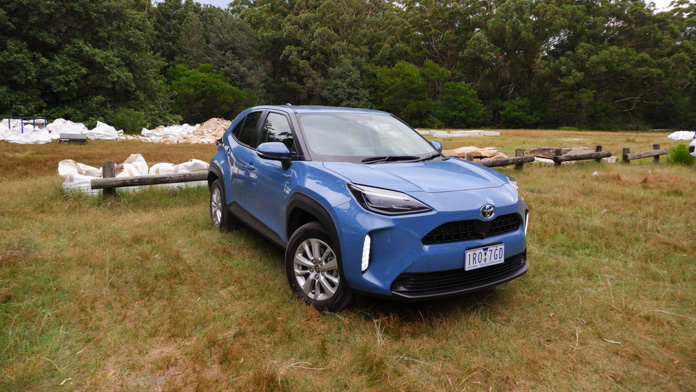
I didn’t miss the lack of AWD either, which mounts an additional electric motor on the rear axle for an additional $3000, at the expense of a significant amount of boot space and the space-saver spare. In my opinion, unless you drive on icy roads up in the mountains, you don’t need it … but if you do, be aware that the torque of the electric motors combined with a lack of any off -road mode means the front-drive Yaris Cross is very eager to spin its wheels and lose traction with the slightest prod of the throttle.
The weather has been uncomfortably hot in Sydney of late but the Yaris Cross has been a lifesaver when I’ve fled to nearby air-conditioned shopping centres during the day. On one occasion, the little Toyota reduced its cabin temp to 21 degrees in around 40-50 seconds, despite the external temperature reading 37 degrees.
It’s a shame then that this brilliant air-conditioning system couldn’t have been more flexible. Unlike its Skoda Kamiq rival, the Yaris Cross offers no dual-zone climate control (it’s single-zone only) – a limitation that has frequently been a point of conflict between my wife and I.
After my three-hour return trip to Wollongong last month left me somewhat sore, I decided to take the masochist route and test the Yaris Cross on a more challenging five-hour drive over some worn country roads.
Dynamically, the Yaris Cross doesn’t need to drive as well as it does, though it’s hugely refreshing to experience a mainstream Toyota no longer aimed at the lowest common denominator. Tackling some winding, pothole-filled roads in greasy conditions would be a fight for survival in some cars but the Yaris Cross proved relatively stable thanks to its well-tuned front strut suspension and torsion-beam rear.
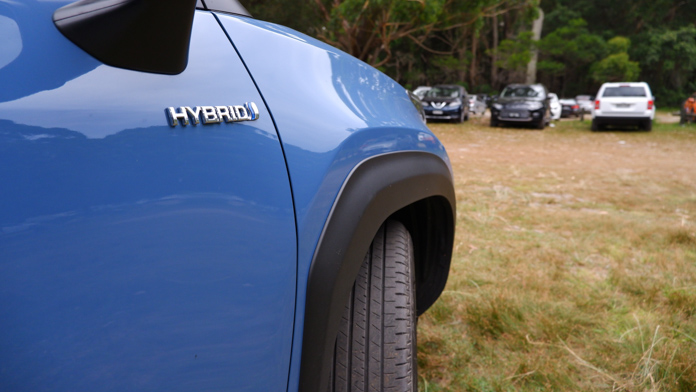
The suspension generally soaks up bumps nicely, though the rear becomes a bit bouncy at times, and while handling balance favours understeer, the Yaris Cross always feels predictable and controllable. But be prepared for a bit of torque steer if you put your foot down too quickly in the wet.
While my day out with the Yaris Cross was enjoyable, the incredibly sore back I returned home with ended it on a sour note. Those front seats clearly need some additional padding, compounded by the ergonomic issues created by poorly designed front door armrests and the lack of an armrest in the centre.
It’s an unfortunate bookend to what has been a fairly enjoyable experience over the last four months, though nothing the mid-life facelift can’t fix!
During my four months with the Yaris Cross I’ve come to really enjoy one thing most of all and that is its charm – something that many cars (and particularly SUVs) often seem to lack.
The keen handling and torquey drivetrain make this a car you want to drive for the fun of it, yet it won’t punish you at the petrol pump for doing so. In fact, during our time with the Yaris Cross, it has stayed dead on or just slightly under its ADR81/02 combined fuel figure of 3.8L/100km – and that includes a variety of suburban, highway and performance driving.
The outward appearance of the Yaris Cross is also a huge credit to Toyota’s design team who have now adapted the Yaris into three good-looking body styles with the GR Yaris, Yaris hatchback and the Smurf Blue-ish small SUV you see here.

While I’ve encountered several negatives in the Yaris Cross – mainly front-seat comfort for larger-framed people – the car underneath is clearly sound and if the next facelift can help make the interior a nicer place to be then this Yaris Cross could be a serious contender as one of the best vehicles in its segment.
This isn’t a claim without merit either as we’ve compared it with rivals such as the Kia Stonic and the Volkswagen T-Cross in back-to-back testing and both offered strong competition.
There is a real sense of ease that comes from driving the Yaris Cross. Its good visibility and 360-degree camera inspire confidence in the driver and make it very easy to recommend to those who have just picked up their licence.
Nothing is perfect, however, and after spending a third of a year in this little blue bus I can safely say I’ve enjoyed my time in it. But if you do find yourself eyeing off a new Yaris Cross, all I’d ask is that you sit in one first.
Variant tested GXL HYBRID
Key specs (as tested)
About Chasing cars
Chasing Cars reviews are 100% independent.
Because we are powered by Budget Direct Insurance, we don’t receive advertising or sales revenue from car manufacturers.
We’re truly independent – giving you Australia’s best car reviews.
The estimate provided does not take into account your personal circumstances but is intended to give a general indication of the cost of insurance, in order to obtain a complete quote, please visit www.budgetdirect.com.au. Estimate includes 15%^ online discount.
^Conditions Apply
Budget Direct Insurance arranged by Auto & General Services Pty Ltd ACN 003 617 909(AGS) AFSL 241 411, for and on behalf of the insurer, Auto & General Insurance Company Limited(ABN 42 111 586 353, AFSL 285 571).Because we don’t know your financial needs, we can’t advise you if this insurance will suit you. You should consider your needs and the Product Disclosure Statement before making a decision to buy insurance. Terms and conditions apply.
Indicative quote based on assumptions including postcode , 40 year old male with no offences, licence suspensions or claims in the last 5 years, a NCD Rating 1 and no younger drivers listed. White car, driven up to 10,000kms a year, unfinanced, with no modifications, factory options and/or non-standard accessories, private use only and garaged at night.
^Online Discounts Terms & Conditions
1. Discounts apply to the premium paid for a new Budget Direct Gold Comprehensive Car Insurance, Third Party Property Only or Third Party Property, Fire & Theft Insurance policy initiated online on or after 29 March 2017. Discounts do not apply to optional Roadside Assistance.
2. Discounts do not apply to any renewal offer of insurance.
3. Discounts only apply to the insurance portion of the premium. Discounts are applied before government charges, taxes, levies and fees, including instalment processing fees (as applicable). The full extent of discounts may therefore be impacted.
4. We reserve the right to change the offer without notice.